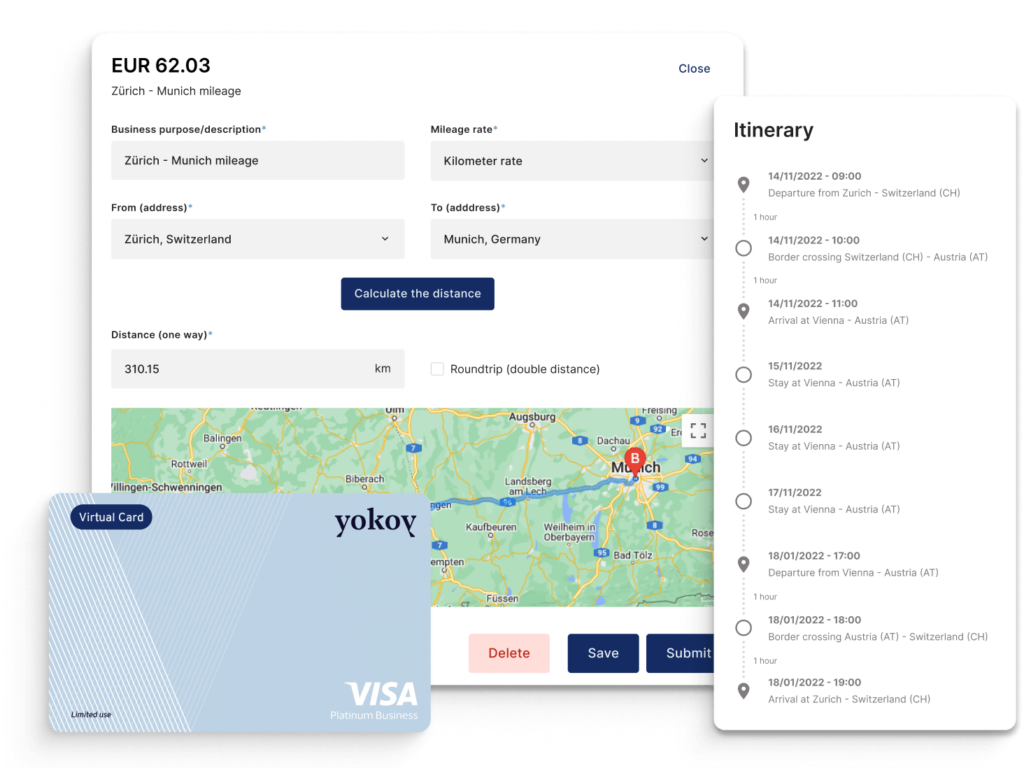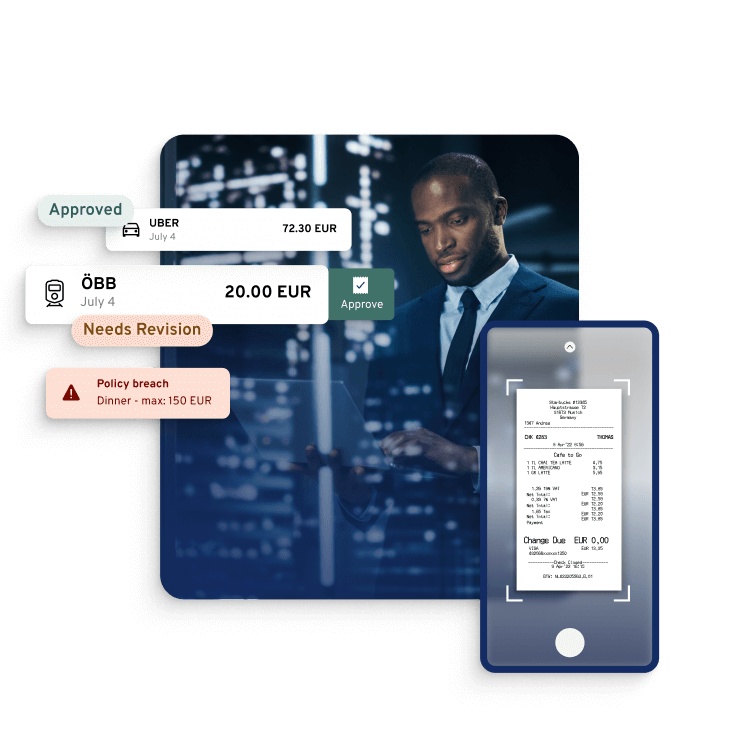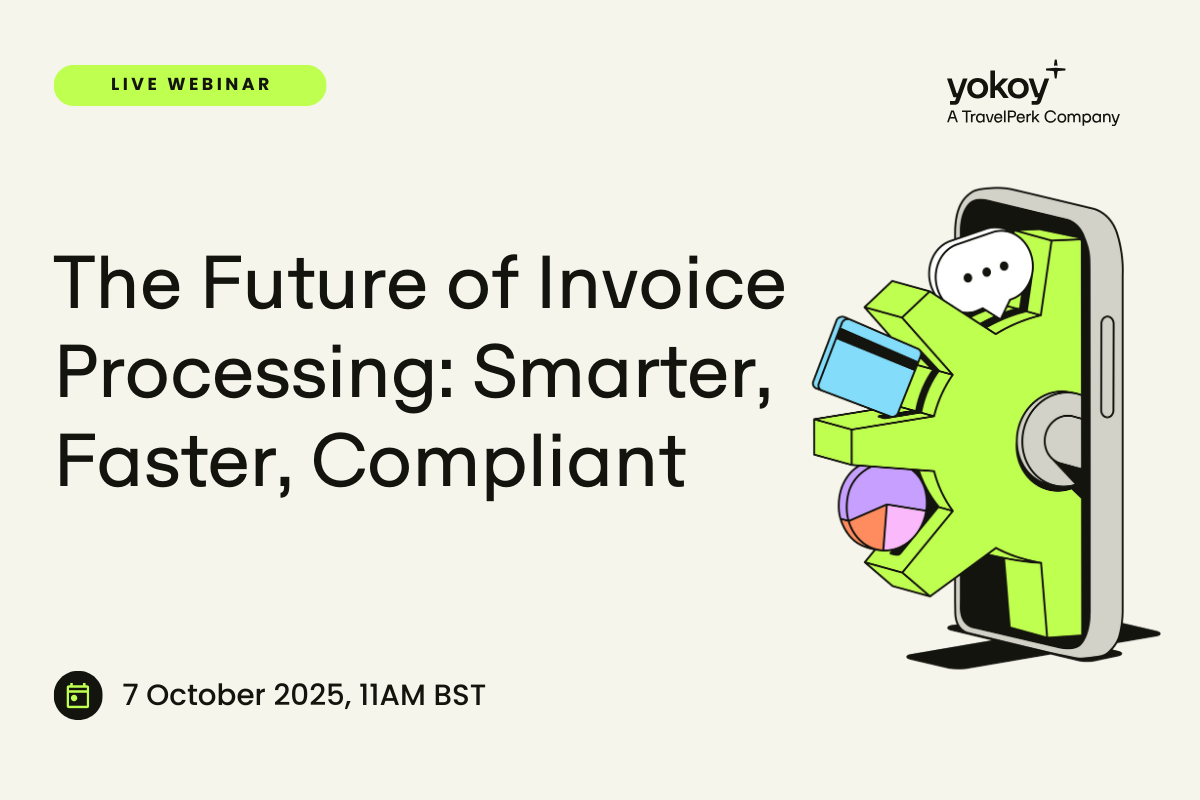Home / Reducing Expense Management Errors with Automation
Reducing Expense Management Errors with Automation
- Last updated:
- Blog

Imagine you can save time and money and prevent errors from being made with a simple yet powerful software solution. Now imagine you can do this for your company’s expense reports: Each costs around £44 to process, yet nearly every fifth report is false, and another £44 needs to be spent for corrections. This causes tremendous inefficiency, but it can quickly escalate, leading to lost productivity, increased risk of fraud, and potential non-compliance with company policies. However, an automated expense management solution could transform this disorganised and error-prone process into a streamlined, efficient, and compliant system that reduces costs, enhances accuracy, and empowers your employees.
Common errors in manual expense management
The manual expense management process is filled with common errors that can have significant financial and operational repercussions. Let us look into some of the most common errors:
Human errors
One of the most common problems in manual spend management is making mistakes. They can range from simple errors, such as incorrect amounts in employee’s travel expenses, to more complex issues like misclassified expenses. Even minor errors can lead to significant discrepancies in financial records, requiring time-consuming corrections and potentially skewing company budgets and financial data.
Employee expense fraud
Manual processes allow expense fraud to stay undetected. This type of fraud can include inflating expense claims or submitting the same expense multiple times. Without automated checks and balances, these fraudulent activities can slip through the cracks, leading to financial losses and eroding trust within the organisation.
Inefficient expense reporting process
The manual handling of expense reports is often very inefficient. Employees must gather all paper receipts, fill out forms, and submit them for review, while finance teams have to manually verify each report, adjust accounts, and ensure accuracy. This inefficiency wastes time and delays reimbursements, leading to dissatisfaction among employees and hindered cash flow.
Non-compliance with expense policies
Manual expense management makes it challenging to enforce company policies consistently. Employees may inadvertently or deliberately bypass set limits or guidelines, leading to non-compliance issues. This can result in unauthorised spending, higher costs, and potential legal risks if the company is audited and found to be out of compliance.
Complex approval workflows
Traditional spend management often involves multiple layers of approval, with reports passing through several hands before being finalised. This complexity can lead to bottlenecks, with delays in approvals and expense reimbursements. Additionally, the lack of a centralised system makes it difficult to track where a report is in the approval process, increasing the chances of reports being lost or forgotten.
How much do traditional expense reports cost your company?
Traditional expense reports can quietly drain a company’s resources — both financially and in terms of productivity. As mentioned earlier, according to the Global Business Travel Association (GBTA), the average cost to process a single expense report is around £44. This figure might seem manageable but can quickly escalate, considering the volume of reports a company typically processes. Moreover, about 19% of these reports contain errors, each adding £39 to the cost of correction. In some organisations, these errors can result in large sums of unnecessary expenses annually.
Manual expense tracking is also time-consuming. It takes an average of 20 minutes to process a single report, which can increase if errors are present or the process is particularly complex. The lost productivity becomes significant when multiplying these minutes across hundreds or thousands of reports. Employees and finance teams are bogged down by repetitive tasks, delaying other important work and slowing down the overall financial reporting process.
These inefficiencies also increase the risk of fraud and non-compliance with company policies. Without automated checks, fraudulent claims may slip through unnoticed, and inconsistent adherence to expense policies can lead to unauthorised spending. Both issues contribute to higher operational costs and potential legal risks, particularly during audits.
With smart spend management, companies can drastically lower per-report processing costs, eliminate manual tasks and reduce errors. The faster processing times of expense management automation can lead to more accurate financial records with real-time visibility.
Yokoy Expense
Streamline your travel and expense management
Say goodbye to manual data entry, lost receipts, and complicated reimbursements. Yokoy handles everything from start to finish, for simple T&E management at any scale.

Fewer errors with expense management automation
What is expense management automation?
Expense management automation involves using software solutions to streamline the process of tracking, submitting, approving, and reporting business expenses. This reduces manual efforts and errors and increases policy compliance.
How automation helps expense management
Expense management automation involves using software solutions to streamline the process of tracking, submitting, approving, and reporting business expenses. This reduces manual efforts and errors and increases policy compliance.
Fewer errors
Automating expense management significantly reduces the occurrence of errors that are common in manual processes. By utilising technologies like optical character recognition (OCR) and automated data entry, the system minimises mistakes related to incorrect amounts, duplicate entries, or misclassified expenses. This improves the accuracy of financial records and reduces the time and cost associated with correcting errors.
Improved compliance
Automated expense management software will reduce the risk of non-compliance by consistently and automatically adhering to company policies. They can flag or reject non-compliant expenses, ensuring all submissions adhere to pre-set guidelines and limits. This reduces the possibility of unauthorised spending and helps companies maintain compliance with internal policies and external regulations, thereby avoiding potential legal issues and financial penalties.
Saving time
Automation streamlines the entire expense management process, from receipt capture to final approval. Employees no longer need to fill out forms or chase down approvals manually, and finance teams can process reports more quickly. This time-saving allows employees to focus on more strategic tasks, improving overall productivity and speeding up the reimbursement process, leading to faster reimbursements.
Higher employee satisfaction
With automation, submitting and approving expenses becomes much simpler and faster. Employees benefit from quicker reimbursements and a more user-friendly experience, reducing frustration and improving overall job satisfaction. When employees know the process is efficient and fair, they are more likely to comply with company policies and feel valued by their organisation.
Better spending insights
Automated expense management systems often come with built-in analytics tools that provide real-time insights into spending patterns. These insights allow CFOs or finance teams to identify trends, spot potential cost-saving opportunities, and ease decision-making.
Implementing automation saves costs and increases the ROI
You should never underestimate: Implementing automation in expense management is a strategic investment that yields significant cost savings and boosts return on investment (ROI) for companies of all sizes. Whether your business is big or small, automating expense management has proven to smoothen operations and contribute to your long-term success.
Yokoy Expense
Manage expenses effortlessly
Streamline your expense management, simplify expense reporting, and prevent fraud with Yokoy’s AI-driven expense management solution.

These features are important for expense management automation
Expense management automation integrates these crucial features—automated submission and filing, individual expense policies, approval workflow automation, real-time reporting and analytics, and accounting system integration. Together, they create a streamlined, efficient, and accurate expense management process, helping your company optimise its financial operations and achieve greater control over its spending.
Automated submission and filing
Expense management systems streamline the submission and filing of expense reports by allowing users to capture and upload receipts through a mobile app. Optical character recognition (OCR) technology automatically extracts and enters relevant data from receipts, reducing manual data entry errors and speeding up the submission process. This integration ensures that your company’s employees can quickly and easily file their expenses, which are automatically organised and categorised, preventing lost or overlooked receipts.
Individual expense policies integrated
These automation platforms include built-in functionality to integrate and enforce individual expense policies. Companies can customise expense rules based on specific guidelines, such as spending limits, acceptable categories, and approval requirements. The system automatically checks each expense against these policies, flagging or rejecting non-compliant submissions. This ensures consistent adherence to company policies and reduces the risk of unauthorised spending.
Approval workflow automation
The approval workflow is automated to streamline the review process. Once an expense report is submitted, it is routed through predefined approval chains based on company policies and the nature of the expenses. Approvers are notified automatically and can review and approve reports directly through the system, regardless of location. This reduces bottlenecks, speeds up the approval process, and ensures that expenses are reviewed promptly and in accordance with organisational protocols.
Real-time reporting and analytics
These automation tools provide real-time reporting and analytics capabilities that offer valuable insights into company spending. They generate detailed reports and visual dashboards that track expenses, highlight trends, and identify potential savings. With real-time data, finance teams can make informed decisions, optimise budgeting, and address issues promptly. The analytics features also enable companies to forecast future expenses and better manage their financial resources.
Integration with accounting systems
Seamless integration with accounting systems is a vital feature of these platforms. The system can automatically sync expense data with a company’s existing accounting software, ensuring that financial records are accurate and up-to-date. This integration helps streamline the reconciliation process, reduces the risk of data discrepancies, and enhances overall financial accuracy. By connecting expense data directly to accounting systems, these platforms ensure that all financial transactions are appropriately recorded and easily accessible for audits and reporting.
Streamlined, efficient expense management processes with Yokoy
In a manual process, employees collect and submit receipts, often leading to errors from manual data entry, misplaced documents, and slow approval workflows.
With Yokoy, however, your employees can profit from automated expense management to streamline their approval process. Let us have a look at Beekeeper, for example. The workforce communication platform used Yokoy to cut its expense processing time by 50% and streamline its approval process. For the global sportswear brand On, Yokoy could leverage a 30% reduction in expense management costs, improving possible compliance and gaining better control over spending.
Another case study with multinational technology company Buhler shows that processing time could be reduced by 40%, which also helped enhance financial oversight with real-time analytics and policy enforcement. Fewer errors, faster approvals, and better financial oversight are only some of the benefits these case studies tell you about Yokoy’s transformative powers.
Next steps
Learn more about our case studies and how Yokoy’s innovative AI-driven solutions can make your business excel. Schedule a demo now to see how Yokoy can support you in all your endeavours.
In this article
Simplify your invoice management
Book a demoRelated content
If you enjoyed this article, you might find the resources below useful.


